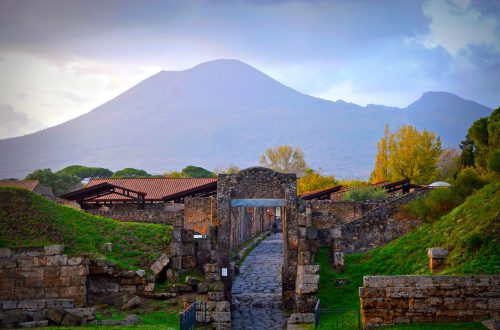
I Survived Hurricane Katrina, 2005
One of the most popular historical fiction series for kids is the I Survived series by Lauren Tarshis. Tarshis travels back in time to important events in history, and tells us a fictional tale of what the event might have been like.
This time, I read about an event that took place in my lifetime. It wasn’t that long ago–this week, it will be 15 years ago. The story is called I Survived Hurricane Katrina.
The Warning Signs
Geography
New Orleans is a city that is nestled deep in Louisiana, and it borders the Mississippi River and Lake Pontchartrain. It is just over a hundred miles north of the Gulf of Mexico, and ranges from six and a half feet below to twenty feet above sea level. With the soil being soft and the location of the city, the city continues to sink. Because so much of the area is below sea level, it’s vulnerable to flooding during hurricanes or other major storms.
The area has a history of flooding because of its geography and location. Other times that the city has flooded include The Great Mississippi Flood of 1927, which was one of the biggest disasters to date. There is a long list of small and big floods that devastated the city and surrounding areas.
The wetlands surrounding the border of Louisiana and the Gulf of Mexico served as protection from hurricanes for years, but the wetlands have been disappearing at an astonishing rate. Between 15 and 25 miles of wetlands are disappearing each year, leaving Louisiana more exposed to the more intense storms that have been occurring more frequently.
The Levees
A levee is a man-made barrier that is built to prevent rivers, lakes, or the ocean from overflowing into unwanted areas. In this situation, levees were built to prevent water from filling up the city of New Orleans, in which has a lot of area that is below sea level.
The levees built around New Orleans were designed so that the city could grow, while most other levees were designed for protection. These levees were also not maintained by a specific agency, meaning communication issues may have led to maintenance neglect.
Because the city is completely surrounded by water, levees are used to keep all of the water from flooding the city. Before the hurricane hit land, experts warned that the storm surge might be higher than the levees, and that there might be some minor flooding from the storm. Some experts even warned that the levees were not strong enough for the storm. Even with the warnings, no one was prepared for the levees to collapse, allowing a rush of water into the city.
The Disaster
The Storm
Hurricane Katrina started off as a tropical depression, and formed over the Bahamas just days before the hurricane made landfall in the Gulf–on August 23, 2005. As the storm traveled, it grew and picked up in strength. It hit Florida as a category 1 hurricane with winds between 74 and 95 miles per hour, and continued across the state until it hit the Gulf of Mexico on the other side.
The storm picked up speed once it reached the Gulf, and by August 27th, the storm had grown to a category 3 hurricane–with winds between 111 and 129 miles per hour.
Evacuation
The city started evacuation on August 28th–the day before Katrina was due to hit the gulf. Over a million people left, but tens of thousands were either unable to leave or refused to. Those who were unable to leave either didn’t have transportation, didn’t have a place to go, or didn’t have the money to.
Some of those who stayed chose to stay in their houses, while others sought shelter at the Louisiana Superdome or the New Orleans Convention Center. Those who evacuated stayed in hotels in Texas or stayed with family who lived inland.
The Impact
This devastating storm was made even more disastrous by the lack of planning. The levees were only built to protect from a category 3 hurricane, and the ground that they were held in was soft. When the storm surge rose several feet above the levees, the levees gave way, causing the water to rush into the bowl-like city. About three-quarters of the city was below water due to the high storm surge.
Over 1,800 people died in the hurricane, and millions of others were left displaced or homeless along the coast from the tragedy. Poor communities were hit harder than others with rebuilding, and years later, the community is still working on rebuilding.
After the Disaster
Hurricane Relief
After the storm was over, people who were unable to evacuate were left stranded in the flooded city. Those who were able to seek shelter at the convention center or Superdome were able to have shelter, but food and water supplies ran out quickly.
The government seemed unprepared for the disaster, and there were no clear expectations on who should take charge on hurricane relief. Because there was no clear section of government taking charge, it took days to get the military in to distribute supplies to those who needed it.
Medical facilities around the area filled up quickly with survivors who had endured the storm. Direct Relief provided over $85 million in relief to hospitals and health care centers in support.
Rebuilding
This week, it will be fifteen years since the hurricane swept the Gulf. After over a decade of rebuilding, it is still not done. A lot of the residents of New Orleans have returned to the city since the disaster, but the poorer neighborhoods have not been rebuilt yet.
The Lower Ninth Ward is a historically low-income African American area, and it was the area in which the levee failed. It was destroyed with over twelve feet of water, and the failure caused 80% of the flooding to the city.
The damage that Hurricane Katrina caused to the states bordering the Gulf of Mexico was over $81 billion dollars in property damage, but the total damage topples over $150 billion. Katrina is currently the costliest hurricane in U.S. history.
Learn More
It’s really sad how a natural disaster can go from bad to tragic because of human error. If the levees had been taken better care of or if officials had listened to the experts, maybe they would have been able to withstand the strength of Hurricane Katrina. The flooding is what caused the most and longest lasting damage, forcing the community to continue picking up the pieces over a decade after the storm.
More on Hurricanes
I did some research on the categories of hurricanes and what the damage would look like after the fact:
| Category | Wind Speeds | Damage Caused |
|---|---|---|
| 1 | 74-95 mph | -Damage to roof, siding, and gutters of homes -Large tree branches will snap and smaller trees will be uprooted -Extensive power damage |
| 2 | 96-110 mph | -Major damage to houses -Many trees will be uprooted or snapped -Power outage that will last days or weeks |
| 3 | 154-177 mph | -Houses will have major damage and may have decking destroyed -Bigger trees will be uprooted and blocking roads -Power and water will be unavailable for days or weeks after storm |
| 4 | 130-156 mph | -Houses will have severe damage with the loss of most of the roof -Most trees will be uprooted and downed -Power poles will be down and isolate residential areas -Power outages will last weeks or months after the storm -May be uninhabitable for weeks or months |
| 5 | 157+ mph | -Almost all houses will be destroyed with roof failure and walls collapsing -Fallen trees and power poles will isolate residential areas -Power will be down for weeks to months -Will most likely be uninhabitable for weeks to months |
More Sources
As always, I want to leave some extra resources for if you’d like to read more about Hurricane Katrina. Most of my sources are linked throughout this post, but here are some of extra sources: more on Hurricane Katrina, National Hurricane Center website, more on hurricane relief from Katrina and more on levees. Happy learning!





